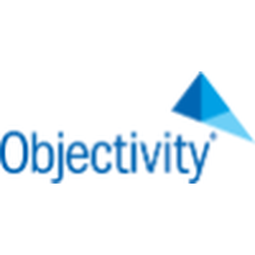
Technology Category
- Functional Applications - Warehouse Management Systems (WMS)
- Platform as a Service (PaaS) - Application Development Platforms
Applicable Industries
- Finance & Insurance
Applicable Functions
- Maintenance
- Warehouse & Inventory Management
Use Cases
- Leasing Finance Automation
- Picking, Sorting & Positioning
Services
- Testing & Certification
The Customer
EFL S.A.
About The Customer
EFL S.A. is a leading leasing company in Poland and a part of the Credit Agricole group. The company began its operations in June 1991, making it one of the first leasing companies in the country. Today, EFL provides a comprehensive set of financial solutions, including lease, loan, long-term hire, factoring, and more. The company serves more than 320,000 customers and has financed 65 billion PLN worth of investments. EFL's operations are heavily reliant on their data warehouse system, which plays a crucial role in allowing them to provide high-quality services to their numerous customers.
The Challenge
EFL S.A., a leading leasing company in Poland, was looking to upgrade their data warehouse system, a crucial component of their operations. The company was considering a full migration to Snowflake, an innovative data warehouse solution. EFL's data warehouse is large and complex, with multiple departments requiring access to different parts of it. The company wanted to verify the effectiveness of Snowflake's tools in managing this complexity. They also wanted to assess whether Snowflake could meet their needs in terms of functionality, performance, and cost-efficiency. It was important for EFL to get an independent expert opinion and not rely solely on the data and materials provided by the vendor. They chose Objectivity for this task, due to their successful past collaborations.
The Solution
Objectivity built a proof of concept of the Snowflake data warehouse solution and conducted extensive testing using a portion of EFL's actual data. This was done to emulate real-life scenarios as accurately as possible and get the most relevant results. The client received a direct comparison of Snowflake and their current data warehouse solution. The team also tested multiple data loading methods to gain a comprehensive insight into the platform's capabilities. A Snowflake-based data warehouse can utilize multiple servers for a single client, allowing Objectivity to set up a separate server for every EFL department that requires access to the data warehouse. This enabled the company to accurately track the needs and expenses of every department and manage permissions easily. Additionally, the proof of concept allowed EFL to estimate the total costs of moving and maintaining their data warehouse in Snowflake.
Operational Impact
Quantitative Benefit

Case Study missing?
Start adding your own!
Register with your work email and create a new case study profile for your business.
Related Case Studies.

Case Study
Real-time In-vehicle Monitoring
The telematic solution provides this vital premium-adjusting information. The solution also helps detect and deter vehicle or trailer theft – as soon as a theft occurs, monitoring personnel can alert the appropriate authorities, providing an exact location.“With more and more insurance companies and major fleet operators interested in monitoring driver behaviour on the grounds of road safety, efficient logistics and costs, the market for this type of device and associated e-business services is growing rapidly within Italy and the rest of Europe,” says Franco.“The insurance companies are especially interested in the pay-per-use and pay-as-you-drive applications while other organisations employ the technology for road user charging.”“One million vehicles in Italy currently carry such devices and forecasts indicate that the European market will increase tenfold by 2014.However, for our technology to work effectively, we needed a highly reliable wireless data network to carry the information between the vehicles and monitoring stations.”

Case Study
Safety First with Folksam
The competitiveness of the car insurance market is driving UBI growth as a means for insurance companies to differentiate their customer propositions as well as improving operational efficiency. An insurance model - usage-based insurance ("UBI") - offers possibilities for insurers to do more efficient market segmentation and accurate risk assessment and pricing. Insurers require an IoT solution for the purpose of data collection and performance analysis

Case Study
Smooth Transition to Energy Savings
The building was equipped with four end-of-life Trane water cooled chillers, located in the basement. Johnson Controls installed four York water cooled centrifugal chillers with unit mounted variable speed drives and a total installed cooling capacity of 6,8 MW. Each chiller has a capacity of 1,6 MW (variable to 1.9MW depending upon condenser water temperatures). Johnson Controls needed to design the equipment in such way that it would fit the dimensional constraints of the existing plant area and plant access route but also the specific performance requirements of the client. Morgan Stanley required the chiller plant to match the building load profile, turn down to match the low load requirement when needed and provide an improvement in the Energy Efficiency Ratio across the entire operating range. Other requirements were a reduction in the chiller noise level to improve the working environment in the plant room and a wide operating envelope coupled with intelligent controls to allow possible variation in both flow rate and temperature. The latter was needed to leverage increased capacity from a reduced number of machines during the different installation phases and allow future enhancement to a variable primary flow system.

Case Study
Automated Pallet Labeling Solution for SPR Packaging
SPR Packaging, an American supplier of packaging solutions, was in search of an automated pallet labeling solution that could meet their immediate and future needs. They aimed to equip their lines with automatic printer applicators, but also required a solution that could interface with their accounting software. The challenge was to find a system that could read a 2D code on pallets at the stretch wrapper, track the pallet, and flag any pallets with unread barcodes for inspection. The pallets could be single or double stacked, and the system needed to be able to differentiate between the two. SPR Packaging sought a system integrator with extensive experience in advanced printing and tracking solutions to provide a complete traceability system.

Case Study
Transforming insurance pricing while improving driver safety
The Internet of Things (IoT) is revolutionizing the car insurance industry on a scale not seen since the introduction of the car itself. For decades, premiums have been calculated using proxy-based risk assessment models and historical data. Today, a growing number of innovative companies such as Quebec-based Industrielle Alliance are moving to usage-based insurance (UBI) models, driven by the advancement of telematics technologies and smart tracking devices.

Case Study
MasterCard Improves Customer Experience Through Self-Service Data Prep
Derek Madison, Leader of Business Financial Support at MasterCard, oversees the validation of transactions and cash between two systems, whether they’re MasterCard owned or not. He was charged with identifying new ways to increase efficiency and improve MasterCard processes. At the outset, the 13-person team had to manually reconcile system interfaces using reports that resided on the company’s mainframe. Their first order of business each day was to print 20-30 individual, multi-page reports. Using a ruler to keep their place within each report, they would then hand-key the relevant data, line by line, into Excel for validation. “We’re talking about a task that took 40-80 hours each week,” recalls Madison, “As a growing company with rapidly expanding product offerings, we had to find a better way to prepare this data for analysis.”



